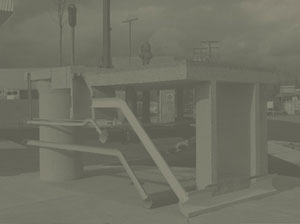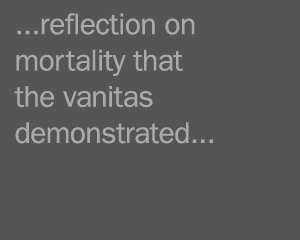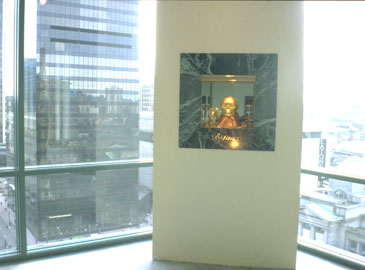Designated pedestrian precincts appear in nearly every large city in Europe, and increasingly in North America. Usually these "shopping streets" are developed in the older, smaller parts of the city not conducive to motor traffic, where the social ritual of the consumer promenade can flourish. Such areas are immensely popular and are consequently thoroughly detailed in anticipation of the intense scrutiny and constant surveillance their large pedestrian spectatorship provides. The concept of "window shopping" is here elevated to an egregious form of visual pleasure.
A conspicuous feature of these calculated spaces is the jewellery store, in which the storefront and display are presented with equal preciousness. The care with which the architecture and its scale are directed toward the reflective contemplation of the contents of small windows is striking, drawing the spectator into an intimate view of exquisitely arranged tableaux.
Walter Benjamin's distinction between symbol and allegory is here useful; the symbol has an unvarying reference, while the unstable meaning of allegory continues to shift according to context. This gives it transformative potential which the symbol lacks.
The experience of these glass cases gives rise to a recognition, from an art historical point of view, of something closely paralleling the taxonomy of the vanitas still life, that allegorical painting genre developed in Holland (especially Leiden) in the 17th century. Typically such works contain various articles - a book, a musical instrument, a flower, a coin, a watch, a shell, pearls, a human skull - revealing to the sympathetic viewer their conceptual attributes. The contemporary jewellery window's selection of artifacts and objects de luxe, with studied choices of fine fabrics and surfaces, the conjoining of natural and artificial things, the intentional light and compositional care, have much in common with vanitas painting from that explosive mercantile century with its shifting relations to material culture and its formal depiction.
The impulse for reflection on mortality that the vanitas demonstrated in 17th century European culture may be reimagined in our present situation through the conflation of this art historical form with a meditation on current commodity relations. The new jewellery store window contains all the elements of the original vanitas except the critical one. In Bijoux the skull's gilded apparition draws out those conflicted economies and terminal futilities of mortal accumulation and perceived value that our new century has inherited.




1981-2000

Bijoux
1989, mixed media, 3' X 3' X 3'
1989, mixed media, 3' X 3' X 3'
gregsnider.ca Copyright © 2007 - Greg Snider.
All Rights Reserved. contact: greg@gregsnider.ca
